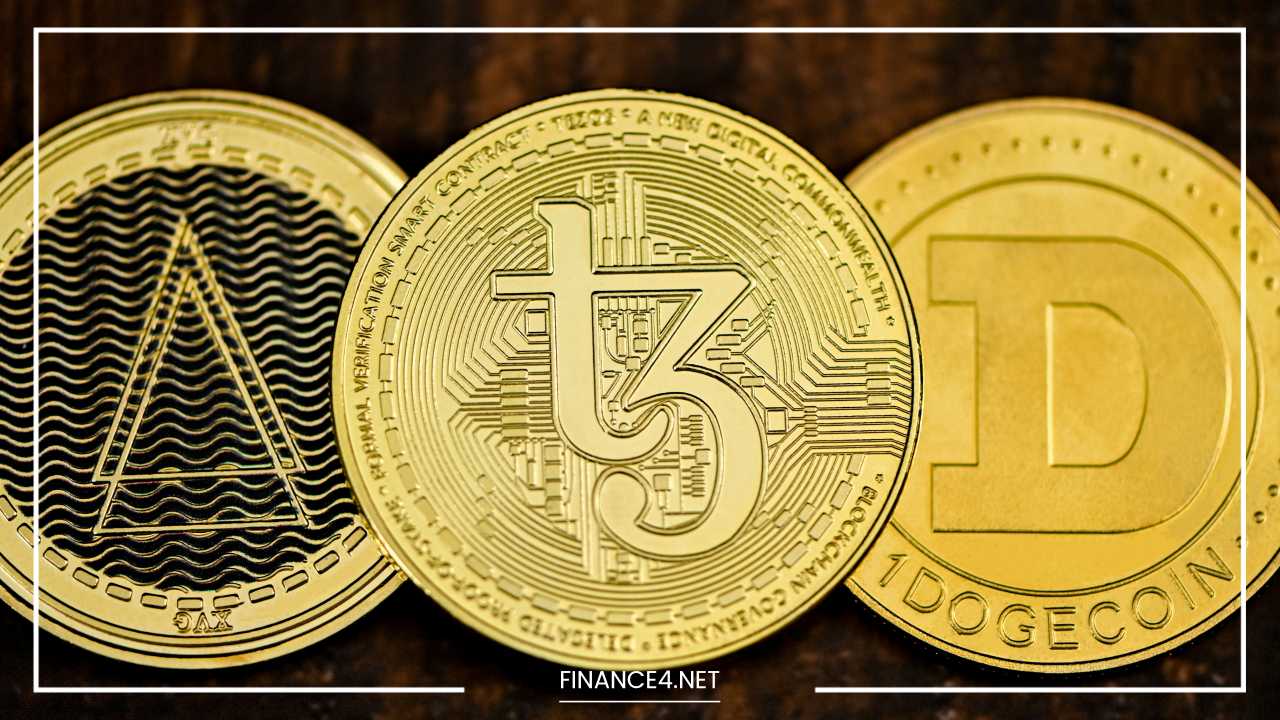How to Find New Cryptocurrencies for Investment

New Cryptocurrencies for Investment
How to Find New Cryptocurrencies for Investment
The cryptocurrency market is a dynamic and rapidly evolving landscape, with new coins and tokens being introduced daily. For investors seeking high returns, identifying promising cryptocurrencies early can be a rewarding strategy.
However, this task involves navigating a complex web of technological innovation, market sentiment, and speculative activity.
This article explores various methods to identify new cryptocurrencies that may hold potential for growth, offering practical tips for both novice and experienced investors.
1. Research and Due Diligence
Understand the Technology
To assess the potential of a new cryptocurrency, it is crucial to understand its underlying technology. Investigate whether the cryptocurrency is built on a novel blockchain consensus mechanism, such as Proof of Stake (PoS) or Delegated Proof of Stake (DPoS), or if it introduces unique features that differentiate it from existing projects.
For example, some cryptocurrencies leverage innovative technologies like sharding or layer-2 scaling solutions to address scalability and performance issues. Understanding these technological aspects can provide insights into the project’s potential for growth and adoption.
Evaluate the Whitepaper
A cryptocurrency’s whitepaper is a foundational document that outlines the project’s goals, technology, economic model, and roadmap.
A well-written whitepaper should clearly articulate the problem the project aims to solve, the proposed solution, and the mechanisms for achieving its objectives.
Pay attention to the project’s technical feasibility, the clarity of its vision, and the realism of its roadmap. Analyzing the whitepaper helps gauge the project’s credibility and its potential for long-term success.
Analyze the Team
The team behind a cryptocurrency plays a critical role in its success. Evaluate the qualifications, experience, and track record of the team members.
Look for individuals with a background in blockchain technology, software development, and relevant industry experience.
A strong and experienced team is more likely to execute the project’s vision effectively and navigate the challenges of the cryptocurrency market.
Additionally, assess the team’s transparency and engagement with the community, as these factors can indicate their commitment and reliability.
Check Community Engagement
A vibrant and active community can be a positive indicator of a cryptocurrency’s potential. Engaged communities often contribute to a project’s development, promote its adoption, and provide valuable feedback.
Look for discussions on forums, social media platforms, and dedicated channels related to the cryptocurrency. Platforms like Reddit, Telegram, and Discord can offer insights into community sentiment and the level of support for the project.
An active community can also signal strong interest and enthusiasm, which can be beneficial for the project’s growth.
2. Explore ICOs and IDOs
Initial Coin Offerings (ICOs)
Initial Coin Offerings (ICOs) are a popular fundraising method where projects sell tokens to investors in exchange for cryptocurrency, typically Ethereum or Bitcoin. ICOs offer early access to new projects and the potential for significant returns if the project succeeds.
However, ICOs can be highly speculative and are often associated with risks, including regulatory scrutiny and project failure. To evaluate upcoming ICOs, research the project’s goals, technology, team, and market potential.
Additionally, verify the legitimacy of the ICO through independent sources and avoid projects that lack transparency or exhibit red flags.
Initial DEX Offerings (IDOs)
Initial DEX Offerings (IDOs) are a decentralized alternative to ICOs and typically take place on decentralized exchanges (DEXs). IDOs offer a more democratic approach to fundraising, allowing anyone to participate without the need for intermediaries.
Evaluate IDOs by analyzing the project’s whitepaper, technology, and team, as well as reviewing the DEX’s reputation and security measures. IDOs can provide opportunities to invest in promising projects at an early stage, but they also come with risks such as volatility and the potential for rug pulls.
3. Leverage Online Resources
Cryptocurrency News and Blogs
Staying updated with industry news and trends is essential for identifying new cryptocurrencies and understanding market dynamics.
Reputable news sources, such as CoinDesk, CoinTelegraph, and The Block, provide valuable insights into emerging projects, regulatory developments, and market analysis. Subscribe to newsletters and follow industry blogs to stay informed about the latest updates and trends in the cryptocurrency space.
Social Media
Social media platforms like Twitter and Reddit are valuable resources for discovering new cryptocurrencies and monitoring market sentiment.
Follow influential figures, such as cryptocurrency analysts, project founders, and industry experts, to gain insights and stay updated on emerging trends. Join discussions and participate in communities to share knowledge and learn from others. Social media can also offer early indications of potential investment opportunities and provide a gauge of community interest.
Cryptocurrency Forums
Forums like Bitcointalk and specialized cryptocurrency forums are platforms where experienced investors and enthusiasts discuss new projects, share insights, and offer advice.
Participating in these forums can provide valuable information about emerging cryptocurrencies and help you gauge the level of interest and support from the community.
Engage in discussions, ask questions, and learn from the experiences of others to enhance your understanding of potential investment opportunities.
Research Platforms
Utilize research platforms such as CoinMarketCap, CoinGecko, and CryptoCompare to track new listings and monitor market trends.
These platforms provide comprehensive data on cryptocurrency prices, market capitalization, trading volume, and historical performance.
Use their tools and features to analyze new listings, compare different cryptocurrencies, and identify potential investment opportunities. Research platforms can also offer insights into market trends and help you make informed decisions.
4. Consider Fundamental Analysis
Market Cap and Circulating Supply
Market capitalization and circulating supply are critical factors to consider when evaluating a new cryptocurrency. Market cap is calculated by multiplying the total supply of coins by their current price.
A lower market cap can indicate potential for growth, but it may also come with higher risks. Assess the circulating supply and the total supply to understand the cryptocurrency’s scarcity and inflationary or deflationary mechanisms.
Tokenomics
Tokenomics refers to the economic model of a cryptocurrency, including its distribution, utility, and mechanisms for creating or destroying tokens.
Analyze the token’s utility, such as whether it is used for transaction fees, governance, or other purposes within the ecosystem.
Evaluate the distribution model, including any pre-mined or reserved tokens, as well as mechanisms for incentivizing participation and ensuring long-term sustainability.
Technology and Scalability
Assess the cryptocurrency’s technology and scalability to determine its potential for widespread adoption. Evaluate the project’s consensus mechanism, scalability solutions, and integration with existing infrastructure.
Consider factors such as transaction speed, cost, and security to gauge the cryptocurrency’s ability to handle increasing demand and support real-world applications.
Partnership and Collaborations
Partnerships and collaborations with established companies or organizations can enhance a cryptocurrency’s credibility and potential.
Look for announcements of strategic partnerships, integrations, or endorsements from reputable entities. Partnerships can provide access to resources, expertise, and networks that can contribute to the project’s success and adoption.
5. Technical Analysis
Chart Patterns
Technical analysis involves examining price charts to identify patterns and trends that may indicate future price movements.
Use charting tools and software to analyze historical price data and recognize patterns such as head and shoulders, triangles, and flags. Chart patterns can provide insights into potential entry and exit points for investments.
Support and Resistance Levels
Support and resistance levels are key concepts in technical analysis that help identify potential price barriers. Support levels represent price points where a cryptocurrency tends to find buying interest and reverse downward trends.
Resistance levels are points where selling pressure may emerge, causing the price to stall or decline. Understanding these levels can assist in making informed decisions about buying or selling a cryptocurrency.
Indicators
Technical indicators, such as Moving Averages, Relative Strength Index (RSI), and Bollinger Bands, can provide additional insights into price trends and potential reversals.
Moving Averages smooth out price data to identify trends, while RSI measures the speed and change of price movements to assess overbought or oversold conditions.
Bollinger Bands provide a range of volatility and potential price levels. Utilize these indicators to complement your technical analysis and make more informed investment decisions.
6. Risk Management and Diversification
Risk Tolerance
Assessing your risk tolerance is crucial for managing investments in the highly volatile cryptocurrency market. Determine how much risk you are willing to take based on your financial situation, investment goals, and time horizon.
Understanding your risk tolerance can help you make informed decisions about which cryptocurrencies to invest in and how to allocate your portfolio.
Diversification
Diversification is a key strategy for managing risk in cryptocurrency investments. Spread your investments across multiple cryptocurrencies to reduce the impact of any single asset’s poor performance.
Diversification can help mitigate risks associated with individual projects and market fluctuations, enhancing the overall stability of your investment portfolio.
Stop-Loss Orders
Stop-loss orders are a risk management tool that allows you to limit potential losses by setting a predetermined price at which your cryptocurrency holdings will be sold.
Implementing stop-loss orders can help protect your investments from significant declines and prevent emotional decision-making during market downturns.
Take-Profit Orders
Take-profit orders allow you to secure profits by selling your cryptocurrency holdings at predetermined price levels. Setting take-profit orders can help you lock in gains and avoid the risk of price reversals.
Establish clear profit targets based on your investment goals and market analysis to maximize your returns.
7. Stay Updated and Continuously Learn
Follow Industry Trends
Keeping up with the latest developments in the cryptocurrency space is essential for identifying new investment opportunities and understanding market dynamics.
Follow industry news, trends, and technological advancements to stay informed about emerging projects and potential shifts in the market.
Learn from Experienced Investors
Seek advice from experienced investors and join communities where you can learn from others. Engage with knowledgeable individuals and participate in discussions to gain insights into successful investment strategies and potential pitfalls.
Learning from others’ experiences can enhance your understanding and improve your investment decision-making.
Stay Informed About Regulations
Regulatory changes can have a significant impact on the cryptocurrency market. Stay informed about relevant regulations and legal developments that may affect the industry.
Understanding regulatory frameworks and compliance requirements can help you navigate potential risks and ensure that your investments align with legal standards.
Final Thoughts
Finding promising new cryptocurrencies for investment involves a combination of research, due diligence, and a willingness to take calculated risks.
By understanding the underlying technology, evaluating the project’s fundamentals, and staying informed about market trends, you can increase your chances of identifying potential investment opportunities.
Remember that investing in cryptocurrencies is speculative and carries inherent risks, so it’s essential to manage your investments wisely and be prepared for potential losses.
With careful analysis and a strategic approach, you can enhance your investment opportunities and navigate the exciting world of cryptocurrency.
Disclaimer: Investing in cryptocurrencies is highly speculative and carries significant risks. It’s essential to conduct thorough research, understand the underlying technology, and be prepared for potential losses. This article provides insights into identifying promising new cryptocurrencies but does not constitute financial advice.



